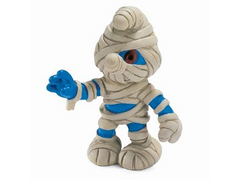kango
|
| posted on 1/4/08 at 10:16 AM |

|
|
Drive shaft allignment
I have red a lot on the allignment of the drive shafts (from the diff to the wheels)
Can somebody mummerise it?
If I look from the top down on my car, must the drive shafts be in a straight line?
If I look from behind of the car , must the driveshafts be parallel to the ground once the car is loaded?
Has anybody got the dimesion of where the diff bracket is welded to the chassis.
Some photos would be appreciated from the top and behing your car.
|
|
|
|
|
Mr Whippy
|
| posted on 1/4/08 at 10:22 AM |

|
|
quote:
Originally posted by kango
Can somebody mummerise it?
you don't 'have' to get them level but doing so helps reduce the wear
[Edited on 1/4/08 by Mr Whippy]
 
Rescued attachment 20544lg.jpg
Fame is when your old car is plastered all over the internet
|
|
|
Dangle_kt
|
| posted on 1/4/08 at 10:24 AM |

|
|
where are you from again Kango? I forget.......

sorry I'm sure some sensible people will be along soon to give you some proper answers.
|
|
|
Mr Whippy
|
| posted on 1/4/08 at 10:25 AM |

|
|
quote:
Originally posted by Dangle_kt
where are you from again Kango? I forget.......

sorry I'm sure some sensible people will be along soon to give you some proper answers.
France I think? 
Love the home made coilover by the way, very clever 
[Edited on 1/4/08 by Mr Whippy]
Fame is when your old car is plastered all over the internet
|
|
|
RazMan
|
| posted on 1/4/08 at 11:12 AM |

|
|
The ideal is to have everything square when normally loaded but I found that anything over ~5 degrees tends to knacker standard cv boots so I switched
to GKN fast boots which are much stiffer and don't deform at speed.
Cheers,
Raz
When thinking outside the box doesn't work any more, it's time to build a new box
|
|
|
MustangSix
|
| posted on 1/4/08 at 01:50 PM |

|
|
The input and output of the driveshaft should be within 3 degrees of parallel for best operation. The max operating angle will depend on the design
of the joint itself.
It does not have to be level to the ground or even straight when viewed from the top. Input and output must be parallel.
[Edited on 1/4/08 by MustangSix]
|
|
|
delboy
|
| posted on 1/4/08 at 05:13 PM |

|
|
I had my diff and drive shafts set up so that the diff was set approx 25mm behind the true line of the shafts on my race car. It was a way of getting
round a regulation about engine position in relation to the diff flange. I had no failures of the shafts at all in 6 years of racing that particular
car.
|
|
|
kango
|
| posted on 1/4/08 at 06:50 PM |

|
|
Thanks for that.
|
|
|
Liam
|
| posted on 1/4/08 at 07:06 PM |

|
|
quote:
Originally posted by MustangSix
The input and output of the driveshaft should be within 3 degrees of parallel for best operation. The max operating angle will depend on the design
of the joint itself.
It does not have to be level to the ground or even straight when viewed from the top. Input and output must be parallel.
[Edited on 1/4/08 by MustangSix]
We have an english-american translation problem I think  . By driveshafts, we mean what you'd call half-shafts, and what you call the
driveshaft is in fact the propshaft . By driveshafts, we mean what you'd call half-shafts, and what you call the
driveshaft is in fact the propshaft  . .
Driveshafts/half-shafts from diff to wheels all have CV joints nowadays and dont have the operational requirements mentioned above, which apply to
universal joints.
Kango - i've got my driveshafts inclined slightly backwards and up from the diff (i.e. my diff is a little low and forwards) but it's no
big deal. Theoretically the CVs will wear a little slower with no angle on them as the little balls wont all be oscillating backwards and forwards.
Then again not doing this may cause them to wear notches in the cage and stop wanting to move at all... so maybe it's best to have some
angle on them as it is with UJs... hmmmm... Wouldn't worry about it too much as long as we're not talking like 30 degrees displacement in
normal running!
Liam
|
|
|













